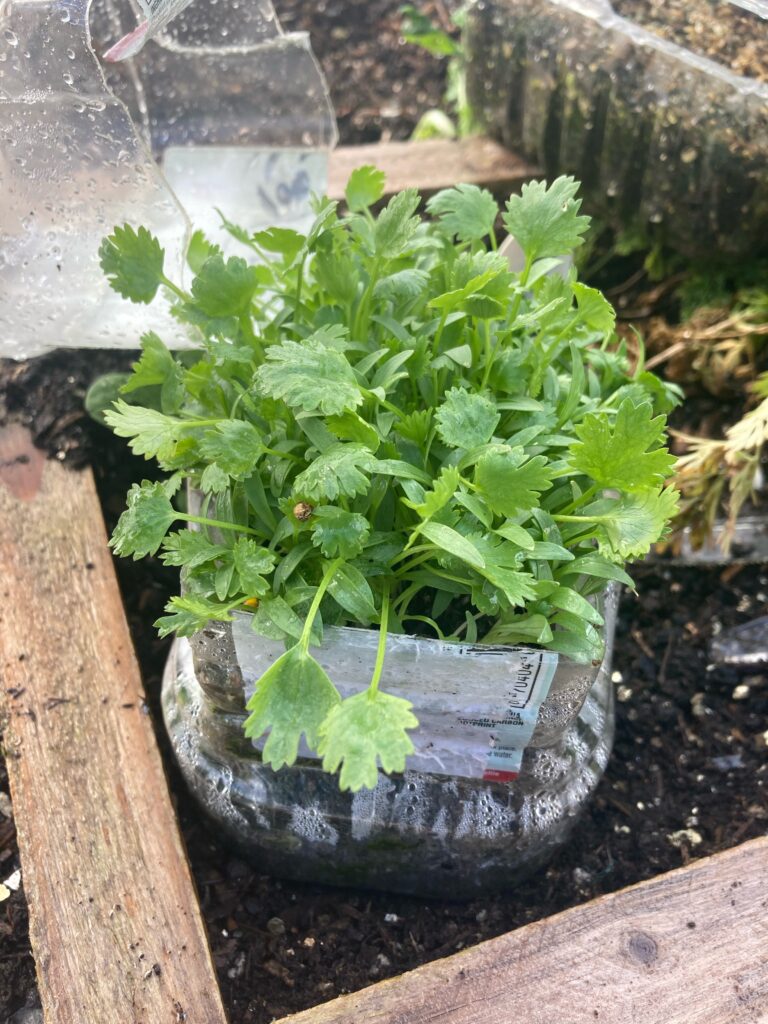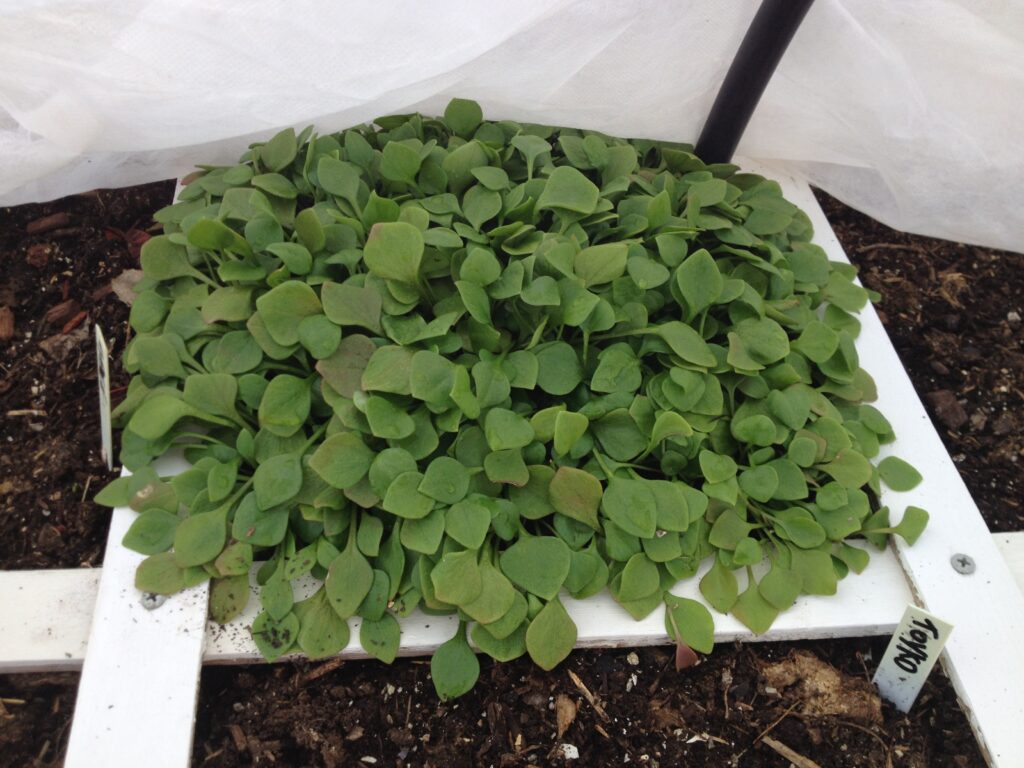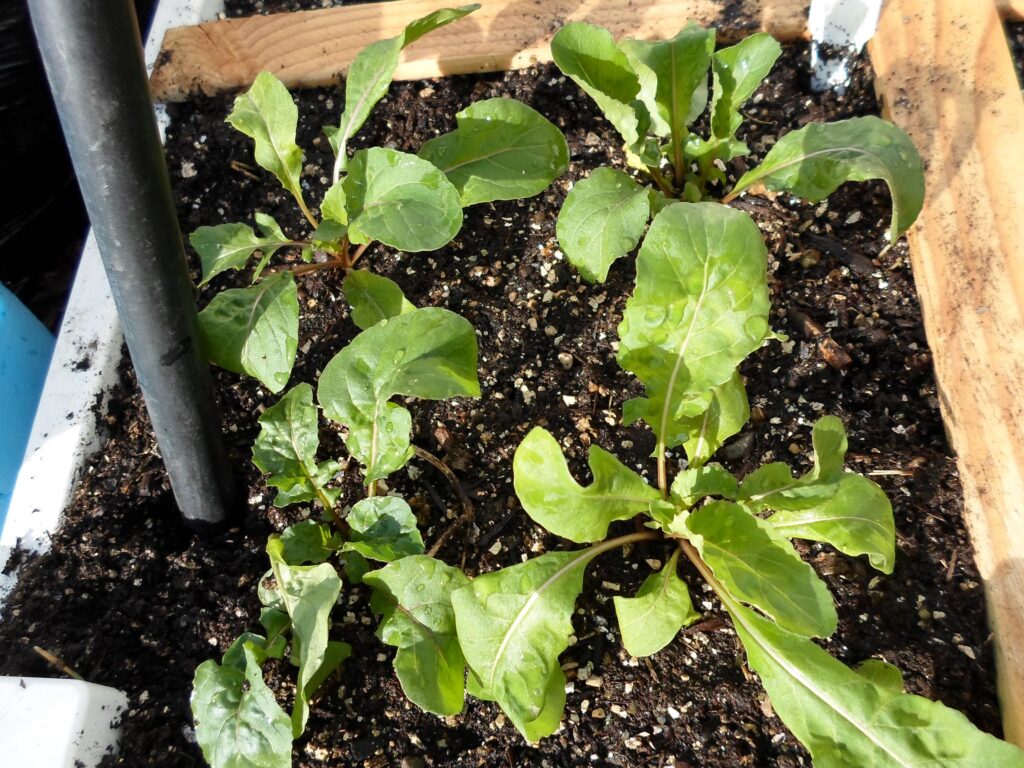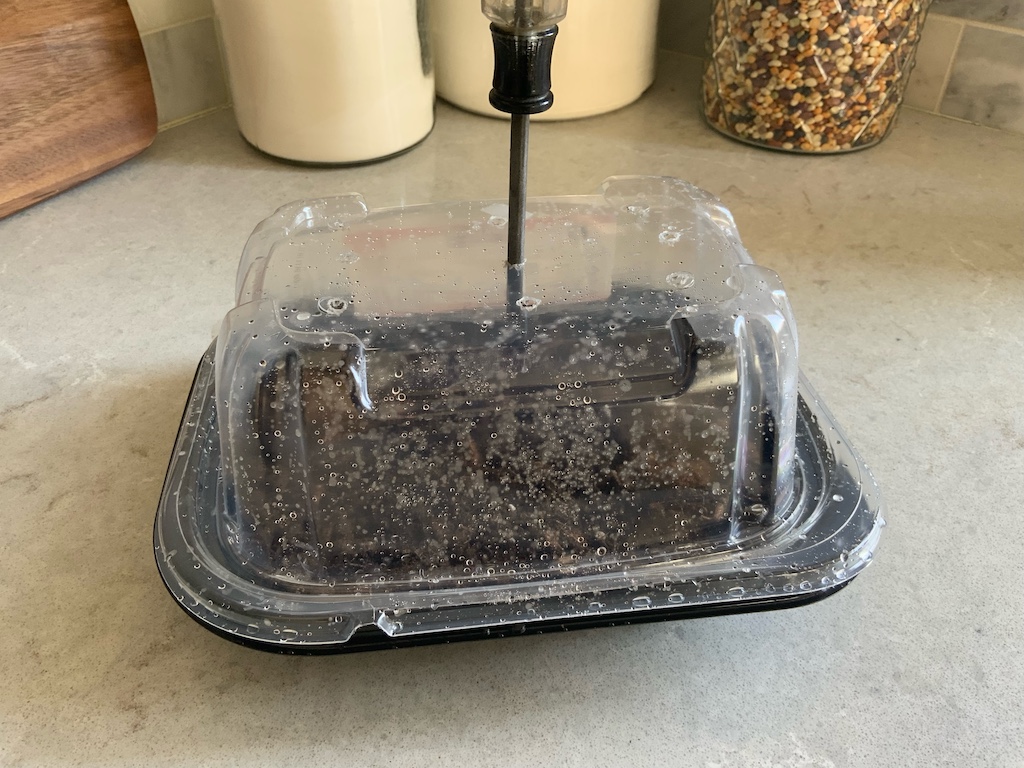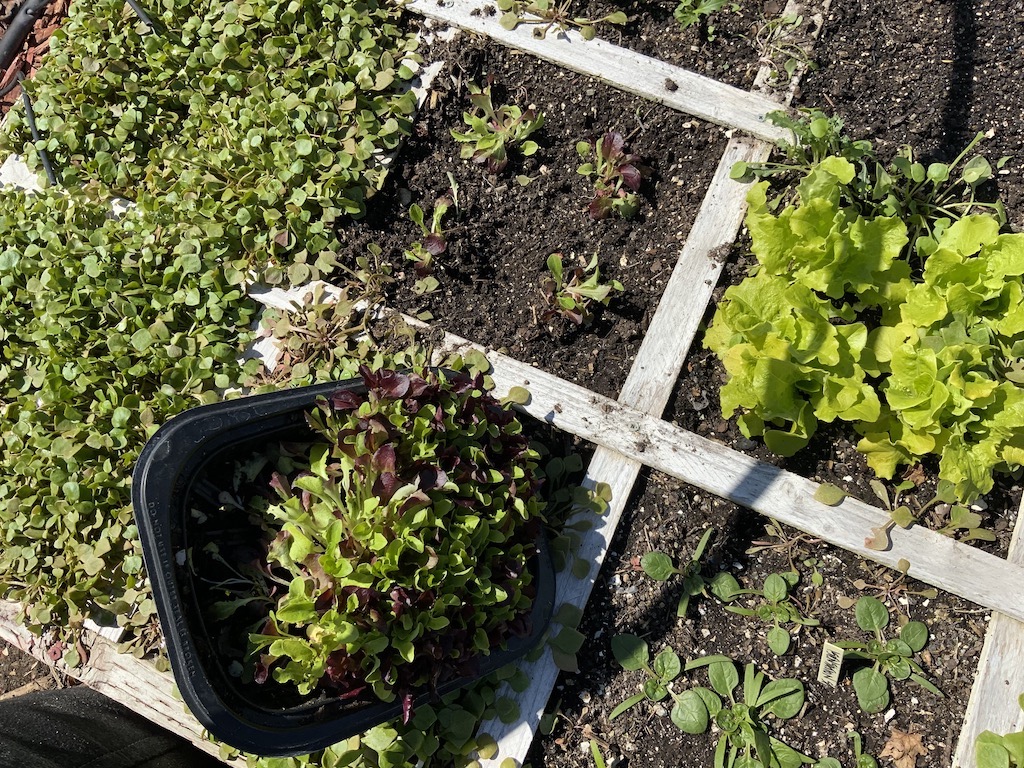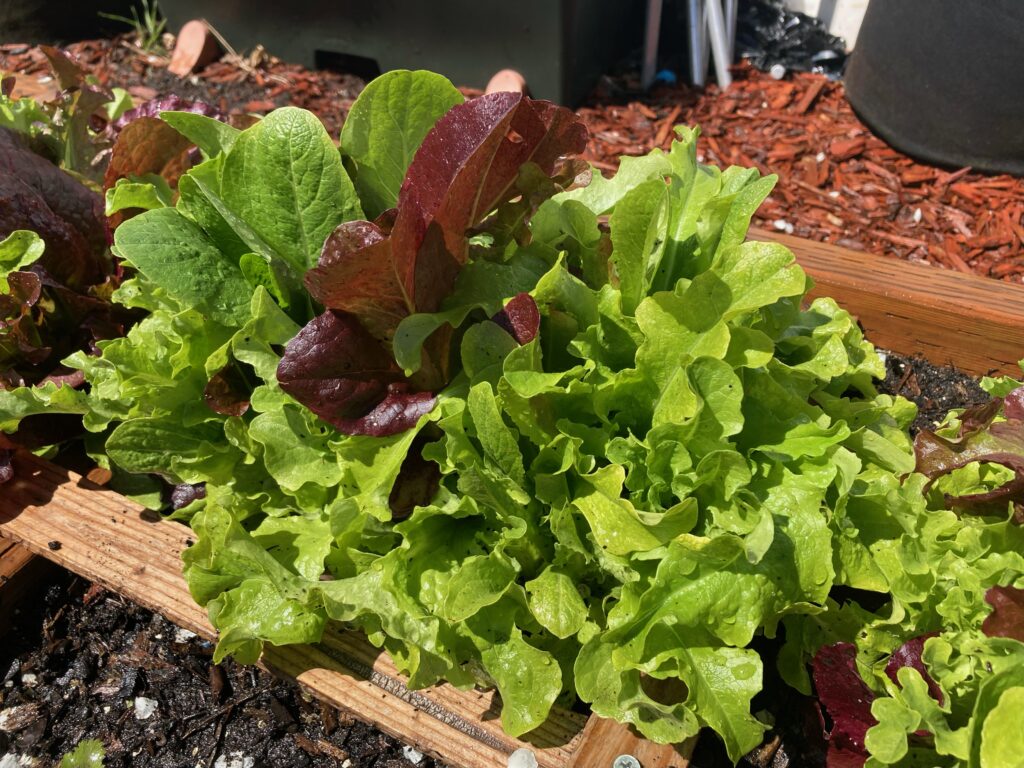 Very late last fall I planted many squares with different things, mostly salad greens. I did something I’ve not done before during our winter season. I usually plant earlier and then use floating row cover until the temperatures get below 28 degrees. That’s when I then add a layer of 4 ml UV plastic over the row cover and leave that on for the winter. I’ll vent if it gets over 40 degrees and it’s sunny. For the most part it stays under both covers from late November until about March 1st, with just a few venting days.
Very late last fall I planted many squares with different things, mostly salad greens. I did something I’ve not done before during our winter season. I usually plant earlier and then use floating row cover until the temperatures get below 28 degrees. That’s when I then add a layer of 4 ml UV plastic over the row cover and leave that on for the winter. I’ll vent if it gets over 40 degrees and it’s sunny. For the most part it stays under both covers from late November until about March 1st, with just a few venting days.
This past year I used no plastic. I wanted to see if it could grow and come up as an early spring garden in our harsh winters using just row cover. It was a record snowfall/cold winter for us in northern Utah. I pulled the floating row cover back weeks ago. The lettuce weren’t as big as the picture shows but it was certainly growing. It made it right through the winter. Now I have this really early spring garden with delicious lettuces.
every night. Snip a few greens and it keeps coming back! For a while anyway. This is a true overwintered garden vs. a winter garden. They are different.
Keep in mind that this will not work if you have freezing temperatures with big, mature heads of lettuce. It only works with baby greens that were started and got slightly established late in the season. One or two of the bigger heads of lettuce turn to mush after a freeze or two. We all were a little tougher when we were smaller, just like lettuces 🙂
